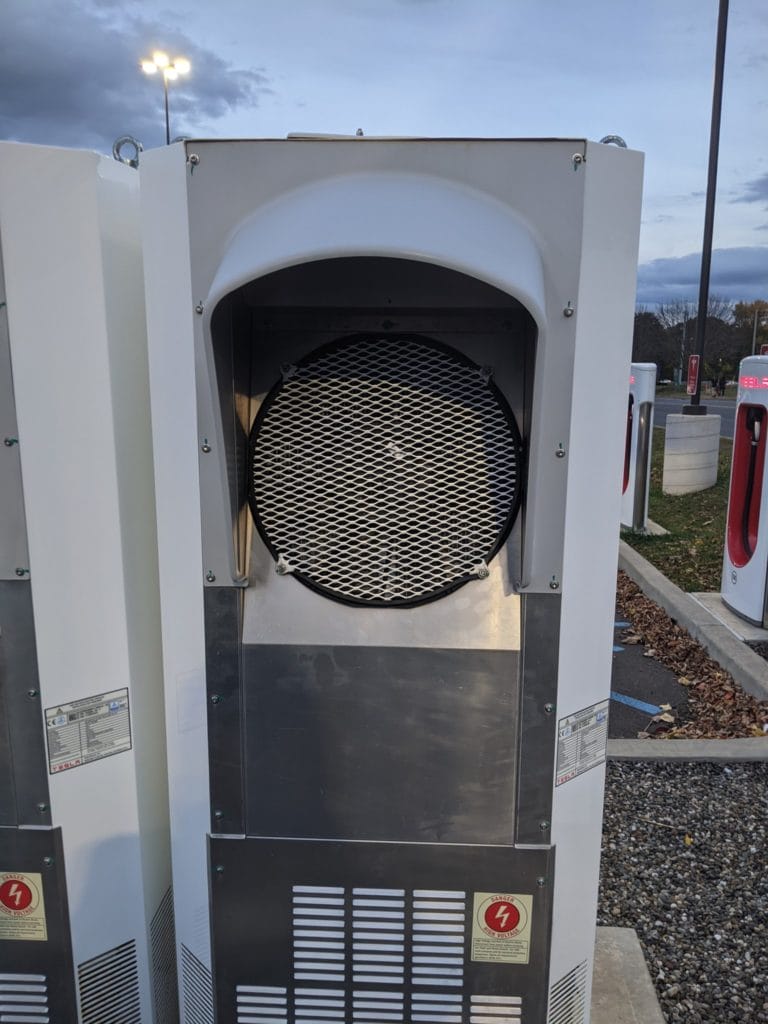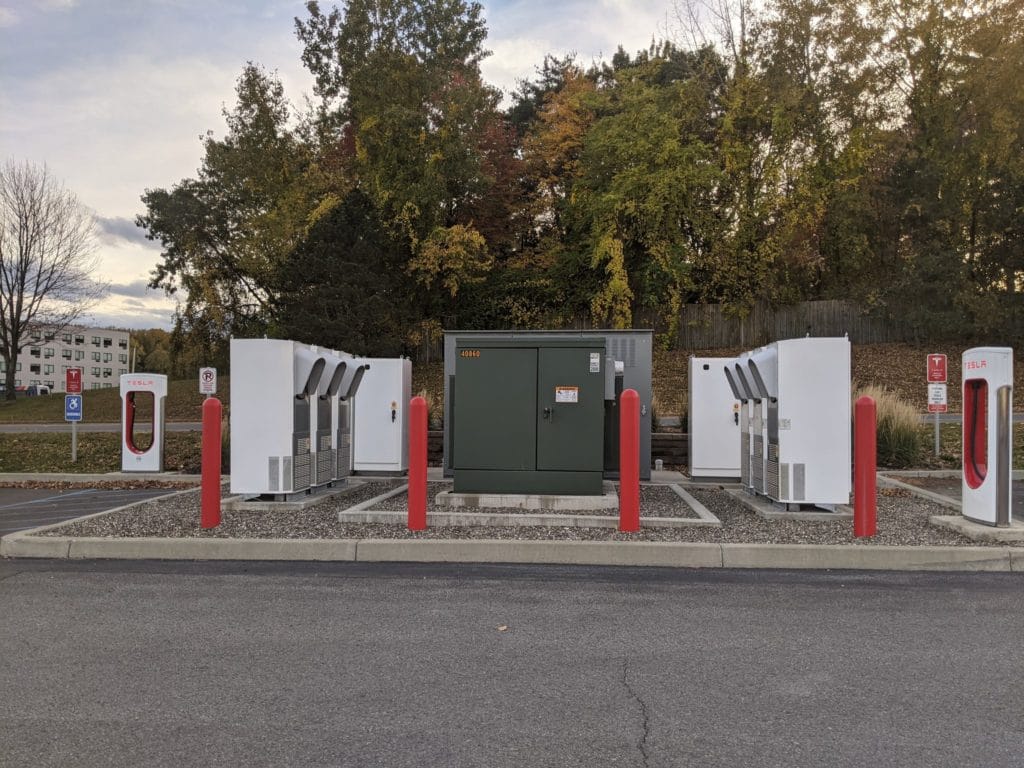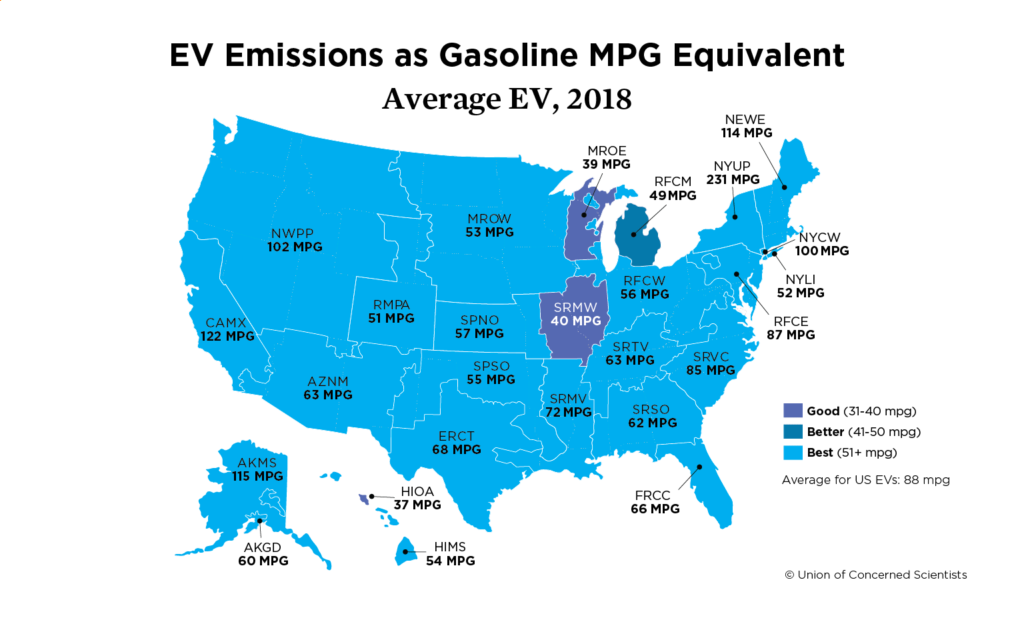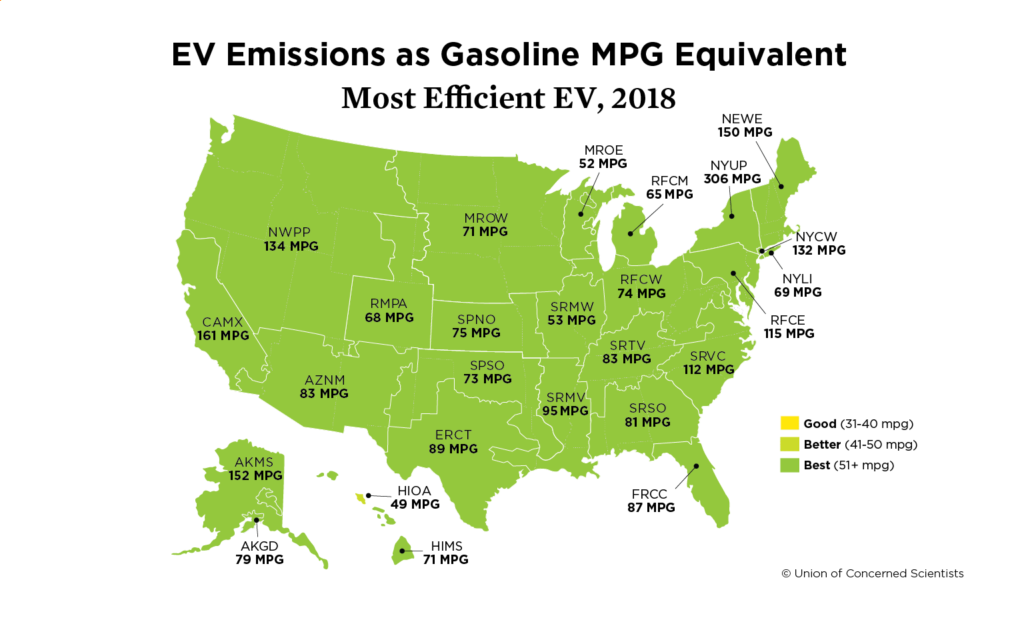First, a definition so we won’t argue with each other. In this article, ‘mpg’ is the standard miles per gallon of gasoline burnt that we all know and love. The new term – mpg(e) – represents the emissions per mile coming from using whatever form of energy to move the car. Which is of course gasoline for a normal car and coal/nuclear/wind/solar/hydro/gas for an electric vehicle.
Burning one gallon of gas in the car will release about 20 pounds of CO2. Since an EV won’t release any emissions itself, we calculate the emissions from the electricity we charge with. And that is what this article is about.
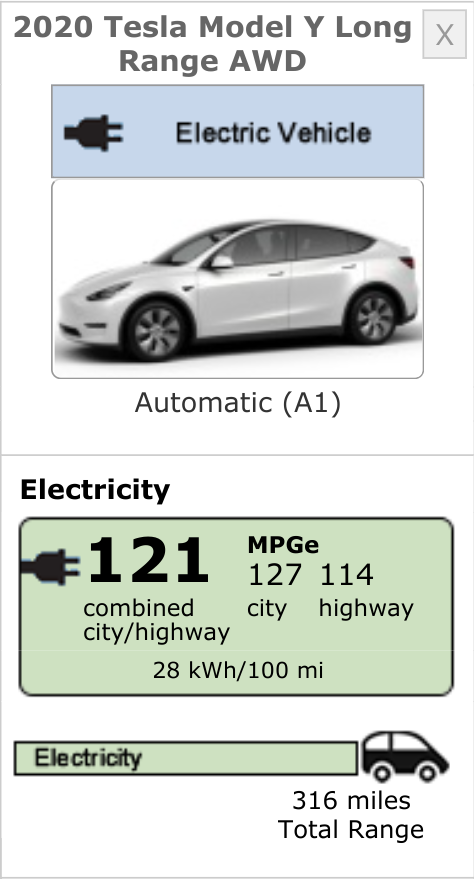
MPGe is miles per gallon equivalent, whereas MPG(e) is emission equivalent for today’s article.
CommercialSolarGuy recently bought a Tesla Model Y. It’s great to have a new car, and I very much so like the long back bed so that I can move ladders and camp in it (it’s long enough to stretch out). Plus – it’s an electric car that gets an equivalent to 114 miles per gallon on the highway – which is roughly 0.28 kWh/mile. Electricity in a car is fundamentally more efficient than burning gas.
Most important, the car doesn’t release pollution or emissions going downtown to New Bedford, or driving to New York state to visit a family of four little kids whose future I care about.
As well, a solar power professional showing up an in EV is putting the money where the mouth is.
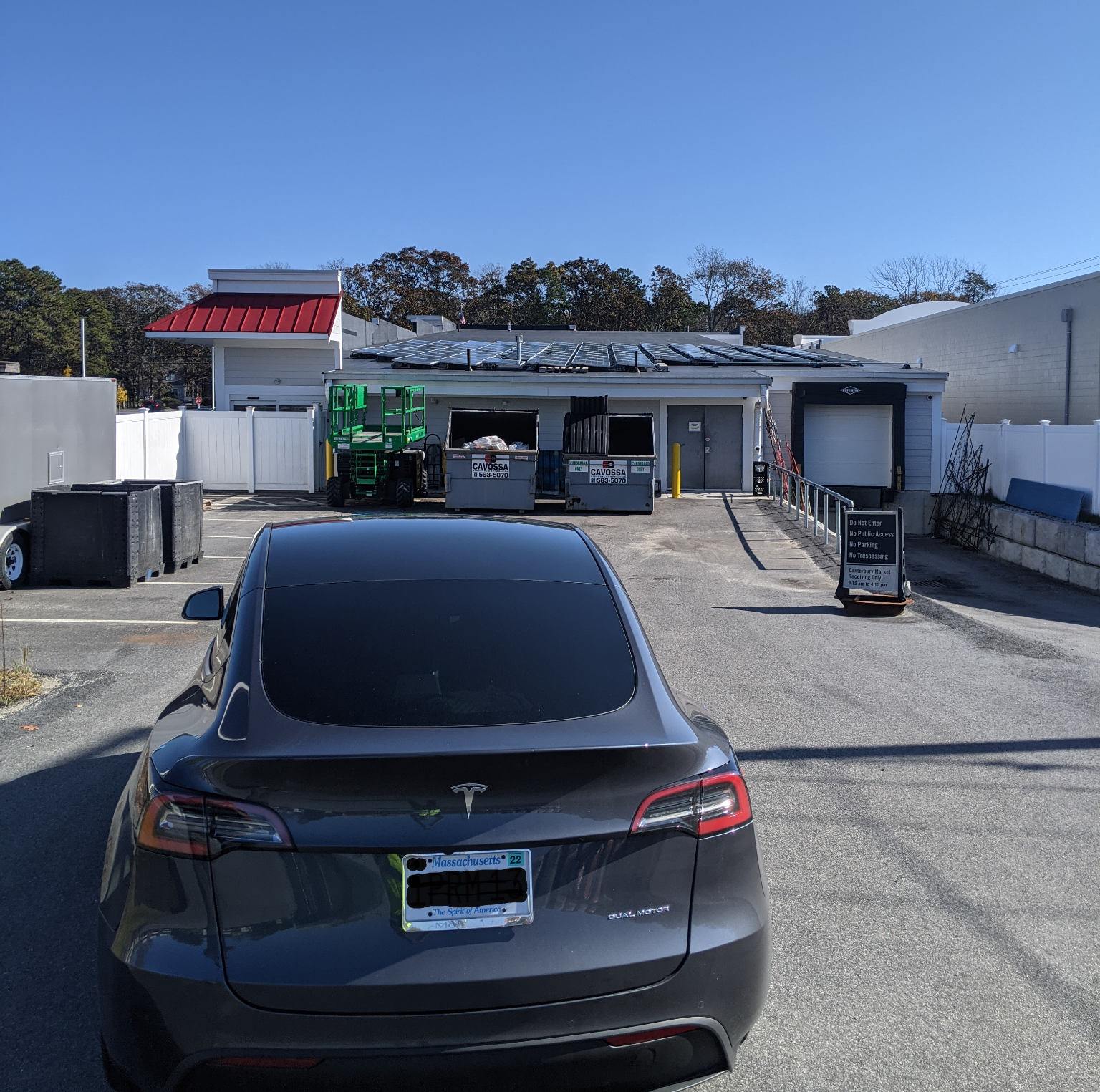
The Tesla Model Y on a recent solar power site visit at the Canterbury Market, on Cape Cod, Massachusetts
This specific post was in fact motivated by a recent family trip to upstate New York, starting on the South Coast of Massachusetts. From an electricity used standpoint, about half of the juice was collected from the New England ISO power grid, and the second half from the New York ISO grid. Specifically, in New York, we charged mostly (in and out) just west of Albany at the Gilderland Supercharger.
A couple of images from that site:
As CommercialSolarGuy is a solar power developer who’s got projects in New York, we happen to know that the upstate areas have a lot of cheap electricity that is relatively clean – lots of hydro. Additionally, as a new clean car owner, we have an interest in knowing the reality of the consumer choices we make. Add in about 20 minutes filling up on electricity while eating an appetizer, fiddling on the a laptop, and reading this really great research done by the Union of Concerned Scientists – then boom – that’s how we end up with driving at least 272 mpg(e) in upstate New York with our Tesla Model Y.
The chart on the left is the mpg(e)of a ‘standard’ EV that gets 88 mpg. On the right, is the same information but for the ‘most efficient’ EV – which at the time of publication, was the 132 mpg Tesla Model 3. With a little algebra, we then see that the 112 mpg Model Y, gets about 272 mpg(e) in upstate New York.
This value is 1/10th what a standard gas burning car outputs.
Adding in a bit of a bonus, is that the data used to build these tables were from power plant emissions in 2018. We’ve got an additional almost two years further into cleaning our power grids. Then add in that the State of New York having a goal of 70% renewable electricity by 2030, and it becomes clear that an electric car will get cleaner as time goes on.
Get solar power, strategically charge the car, and you can respectfully argue you’re running your car on a healthy amount of pure, clean, fresh from the sky sunshine.

